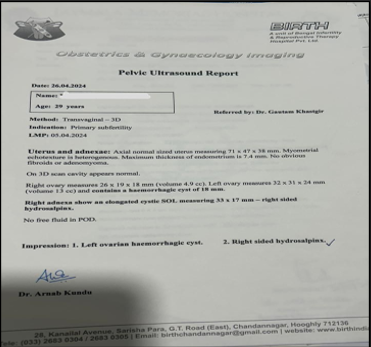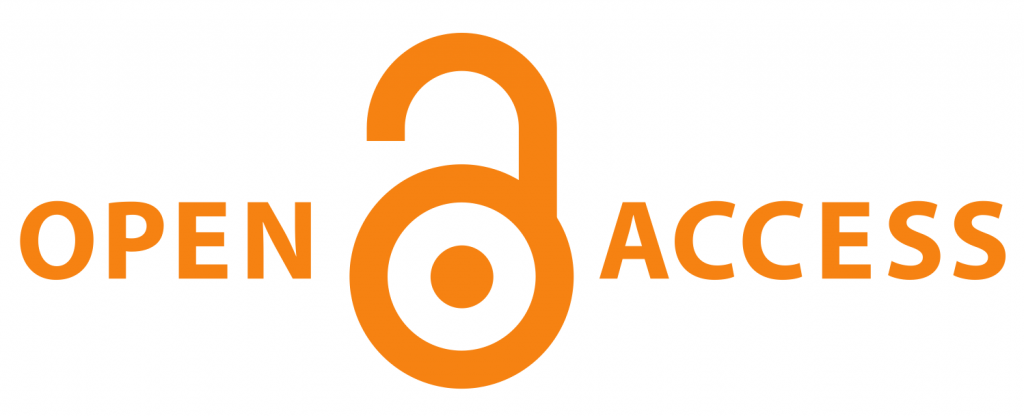Ayurvedic management of Hydrosalpinx - A Case Series of Three Patients on Non-Surgical Restoration of Tubal Patency
DOI:
https://doi.org/10.21760/jaims.10.9.62Keywords:
Infertility, Hydrosalpinx, Shotha, Kshetra Dushti, Ayurveda, Shaman AushadhAbstract
Introduction: Hydrosalpinx, a fluid-filled blockage of the fallopian tubes, is a major contributor to female infertility accounting for up to one third of tubal factor infertility cases. Conventional management typically involves surgical removal or occlusion of the affected tube prior to assisted reproductive procedures. However, these approaches may not always be accessible, affordable or acceptable to all patients. Ayurveda offers a non-surgical, holistic alternative by addressing Dosha imbalance and Srotodushti. This case series evaluates the effectiveness of Ayurvedic drug management in restoring tubal function and reproductive potential. Case Presentation: This case series documents three patients aged 29-31 of primary infertility (7-9 years), with radiological evidence (HSG or TVS) of hydrosalpinx were treated with Ayurvedic medication. All had regular menses with no prior conception. Intervention: The treatment administered for 3-5 months included Ayurvedic formulations for Shamana (palliative treatment), such as Aragvadhadi Kashayam, Punarnava Mandur, Haridrakhand, Chandraprabha Vati, and Kaishor Guggul etc. These herbal remedies were chosen to address the underlying imbalances and support fertility restoration. Outcome: Over the course of 3 to 5 months, All the patients demonstrated resolution of hydrosalpinx and normalization of the fallopian tubes & patency. Conclusion: This case series highlights successful non-surgical Ayurvedic management of hydrosalpinx, offering a potential integrative approach to infertility care.
Downloads
References
1. Palagiano A, Cozzolino M, Ubaldi FM, Palagiano C, Coccia ME. Effects of hydrosalpinx on endometrial implantation failures: evaluating salpingectomy in women undergoing in vitro fertilization. Rev Bras Ginecol Obstet. 2021 Apr;43(4):304–10. doi:10.1055/s-0040-1722155. PMID: 33601465; PMCID: PMC10183881.
2. Barmat LI, Rauch E, Spandorfer S, et al. The effect of hydrosalpinges on IVF-ET. J Assist Reprod Genet. 1999;16(7):350–4.
3. Patil N, et al. Evaluation of tubal factor in infertility using HSG. J Evid Based Med Healthc. 2020;7(30):1395–400.
4. Mohammed-Durosinlorun A, et al. Hysterosalpingographic patterns in infertile Nigerian women. Ann Afr Med. 2019;18(2):65–9.
5. Upadhyay Y, editor. Madhukosh Vyakhya on Madhav Nidan of Vijayrakshit. Ch 36, Ver. 1. Reprint ed. Varanasi: Choukhamba Surbharati Prakashana; 2013. p.269.
6. Ammon HP, Safayhi H, Mack T, Sabieraj J. Mechanism of anti-inflammatory actions of curcumin and boswellic acids. J Ethnopharmacol. 1993;38(2–3):113–9.
7. Tiwari PV. Ayurvediya Prasuti Tantra avum Stri Roga. Vol I, Prasuti Tantra. Reprint ed. Varanasi: Chaukhambha Orientalia; 2017. p.86.
8. Van Dau N, Ngoc Ham N, Huy Khac D. The effects of traditional drug, turmeric (Curcuma longa), and placebo on the healing of duodenal ulcer. Phytomedicine. 1998;5(1):29–34.
9. Kumari R, Sharma S. Ayurvedic management of bilateral hydrosalpinx: a case report. AYUSHDHARA. 2022;9(1):132–5.
10. Srikantamurthy K. Ashtanga Hridayam Sutra Sthana. Ch 15. Reprint ed. Varanasi: Choukambha Bharati Academy Press; 2007. p.17.
11. Sastry LN. Dravyaguna Vijnana. Vol 3. Forward by Chunekar KC. Reprint ed. Varanasi: Chowkhamba Orientalia; 2008. p.282.
12. Agnivesha, Charaka, Dridhabala. Charaka Samhita, Chikitsa Sthana, Pandurogachikitsa Adhyaya. 16/93–96. Reprint ed. Varanasi: Chaukhamba Surbharati Prakashana; 2005. p.530.
13. Mishra S, editor. Bhaishajya Ratnawali of Govind Das Sen. Prameha Pidakadhikara Adhyaya. Ch 38, Ver. 22–27. Reprint ed. Varanasi: Chaukhambha Surbharati Prakashan; 2017. p.722.
14. Tripathy B. Saranghadhara Samhita, Madhyam Khanda. Ch 7, Vataka Kalpana. Reprint ed. Varanasi: Chaukhamba Surbharati Prakashan; 2007. p.201–2.
15. Krishnan KV. Sahasrayogam, Sujanapriya Vyakhyanam. 31st ed. Alappuzha: Vidyarambham Publishers; 2007. p.92.
16. Shri Govindadas. Bhaishajya Ratnavali (Hindi) by Kaviraja Ambikadatta Shastri. Reprint ed. Varanasi: Chaukhamba Prakashan; 2013. p.368.
17. Tripathy B. Sharangdhara Samhita, Madhyam Khanda, Vataka Kalpana Adhyaya. Ch 7, Ver. 70–84. Reprint ed. Varanasi: Chaukhamba Surbharati Prakashan; 2017. p.722.
18. Agnivesha, Charaka, Dridhabala. Charaka Samhita, Chikitsa Sthana, Pandurogachikitsa Adhyaya. 16/93–96. Reprint ed. Varanasi: Chaukhamba Surbharati Prakashana; 2005. p.530. (Duplicate of Ref 14)
19. Shastri K, Chaturvedi G, editors. Charaka Samhita of Agnivesha, Chikitsa Sthana; Panduroga Chikitsitam. Ch 16, Ver. 20–23. Reprint ed. Varanasi: Chowkhambha Bharati Academy; 2013. p.308.
20. Verma N, Awasthi V, Rastogi S, Verma A, Arora S, Arora N. Assessment of the efficacy and safety of SNEC 30 (Curcuma longa) capsules in the treatment of type 2 diabetes: an open label, prospective, comparative, randomized study. World J Pharm Res. 2021;10(12):1210–8.

Published
How to Cite
Issue
Section
License
Copyright (c) 2025 Preeti Garg, Jyotsna Thakur

This work is licensed under a Creative Commons Attribution 4.0 International License.














